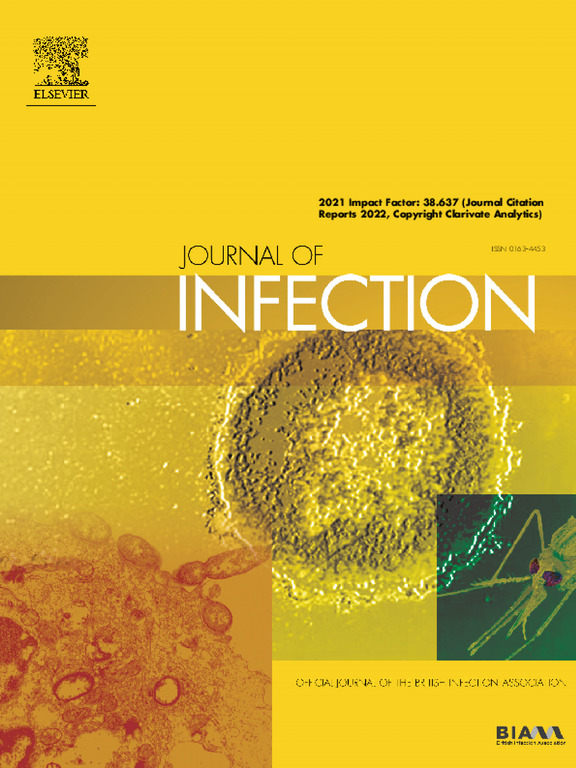Population-based longitudinal study over two decades of Candida and Candida-like species bloodstream infection reveals gender and species differences in mortality, recurrence and resistance
IF 14.3
1区 医学
Q1 INFECTIOUS DISEASES
引用次数: 0
Abstract
Background
The global burden of bloodstream infection (BSI) due to Candida, and species previously classed as Candida (Candida-like species) is substantial. Recent emergence of Candida auris, fluconazole-resistant Candida parapsilosis and echinocandin-resistant Nakaseomyces glabratus emphasise the importance of global and regional surveillance.
Methods
Blood cultures with growth of Candida/Candida-like species in Queensland, Australia (population ≈ 5 million) over a 20-year period (1 January 2000–31 December 2019) were retrospectively identified. Clinical, microbiological and outcome information was obtained from state-wide databases. Cox proportional and Fine-Gray subdistribution hazard models were used to construct hazard ratios for 30-day all-cause case fatality and 1-year recurrence, respectively.
Results
A total of 2586 episodes (2420 patients) of Candida/Candida-like bloodstream infection (Ca-BSI) were identified; 249 episodes (9.5%) were in children. Candida albicans and C. parapsilosis complex reduced in frequency, whilst N. glabratus and Candida dubliniensis increased during the study. Of 1836 isolates tested, fluconazole (3.2%) and echinocandin (0.7%) resistance rates were low, with a decrease in fluconazole resistance observed from the first half of the study period to the latter half (4.5% versus 2.2%, P<0.01). Overall, 30-day all-cause mortality (21%) was unchanged: C. parapsilosis complex (aHR 0.44, 95% CI 0.32–0.60) was associated with decreased mortality, while C. tropicalis (aHR 1.35, 95% CI 0.95–1.93) was associated with an increase. Only 3.1% episodes demonstrated recurrence of Ca-BSI within one year. Presence of uncommon Candida species (aSHR 6.60, 95% CI 2.99–14.56) and an endovascular source of infection (aSHR 4.42, 95% CI 1.87–10.46) were associated with recurrence, while male gender (aSHR 0.57, 95% CI 0.35–0.92) was protective. Resistance to fluconazole (3.2% vs 3.5%, P=0.58) and echinocandins (0.6% vs 2.0%, P=0.05) was higher in recurrent Ca-BSI episodes. Females had a higher rate of fluconazole resistance (4.1% versus 2.4%, P=0.02).
Conclusions
Our study highlights important shifts in causative species and resistance patterns of Ca-BSI which impacts clinical management. Antifungal resistance rates were low overall. The identification of new modifiable and non-modifiable risk factors for recurrence and mortality provides opportunities to examine new strategies to improve patient outcomes.
基于人群的二十年念珠菌和念珠菌样物种血液感染纵向研究揭示了性别和物种在死亡率、复发率和耐药性方面的差异
背景念珠菌和以前被归类为念珠菌的物种(类似念珠菌的物种)引起的全球血液感染(BSI)负担是巨大的。最近出现的金黄色念珠菌、耐氟康唑的假丝酵母菌伴假丝酵母菌和耐棘白菌素的秃毛中aseomyces glabratus强调了全球和区域监测的重要性。方法对澳大利亚昆士兰州(人口约500万)20年间(2000年1月1日至2019年12月31日)伴有念珠菌/念珠菌样生长的血培养物进行回顾性鉴定。临床、微生物学和结果信息从全州数据库获得。Cox比例和Fine-Gray亚分布风险模型分别用于构建30天全因病死率和1年复发率的风险比。结果共发现念珠菌/念珠菌样血流感染(Ca-BSI) 2586例(2420例);249例(9.5%)为儿童。在研究期间,白色念珠菌和假丝酵母菌复合菌的频率降低,而光秃念珠菌和都柏林念珠菌的频率增加。在1836株分离株中,氟康唑(3.2%)和棘白菌素(0.7%)的耐药率较低,从研究前半期到后半期氟康唑耐药率下降(4.5%对2.2%,P<0.01)。总的来说,30天的全因死亡率(21%)没有变化:枯草弧菌复合体(aHR 0.44, 95% CI 0.32-0.60)与死亡率降低相关,而热带弧菌(aHR 1.35, 95% CI 0.95-1.93)与死亡率升高相关。只有3.1%的患者在一年内Ca-BSI复发。罕见念珠菌种类(aSHR 6.60, 95% CI 2.99-14.56)和血管内感染源(aSHR 4.42, 95% CI 1.87-10.46)与复发相关,而男性(aSHR 0.57, 95% CI 0.35-0.92)具有保护作用。复发Ca-BSI患者对氟康唑(3.2% vs 3.5%, P=0.58)和棘白菌素(0.6% vs 2.0%, P=0.05)的耐药性较高。女性对氟康唑的耐药率较高(4.1%对2.4%,P=0.02)。结论我们的研究强调了Ca-BSI致病物种和耐药模式的重要转变,影响了临床治疗。抗真菌耐药率总体较低。确定新的可改变和不可改变的复发和死亡率风险因素为研究改善患者预后的新策略提供了机会。
本文章由计算机程序翻译,如有差异,请以英文原文为准。
求助全文
约1分钟内获得全文
求助全文
来源期刊

Journal of Infection
医学-传染病学
CiteScore
45.90
自引率
3.20%
发文量
475
审稿时长
16 days
期刊介绍:
The Journal of Infection publishes original papers on all aspects of infection - clinical, microbiological and epidemiological. The Journal seeks to bring together knowledge from all specialties involved in infection research and clinical practice, and present the best work in the ever-changing field of infection.
Each issue brings you Editorials that describe current or controversial topics of interest, high quality Reviews to keep you in touch with the latest developments in specific fields of interest, an Epidemiology section reporting studies in the hospital and the general community, and a lively correspondence section.
 求助内容:
求助内容: 应助结果提醒方式:
应助结果提醒方式:


